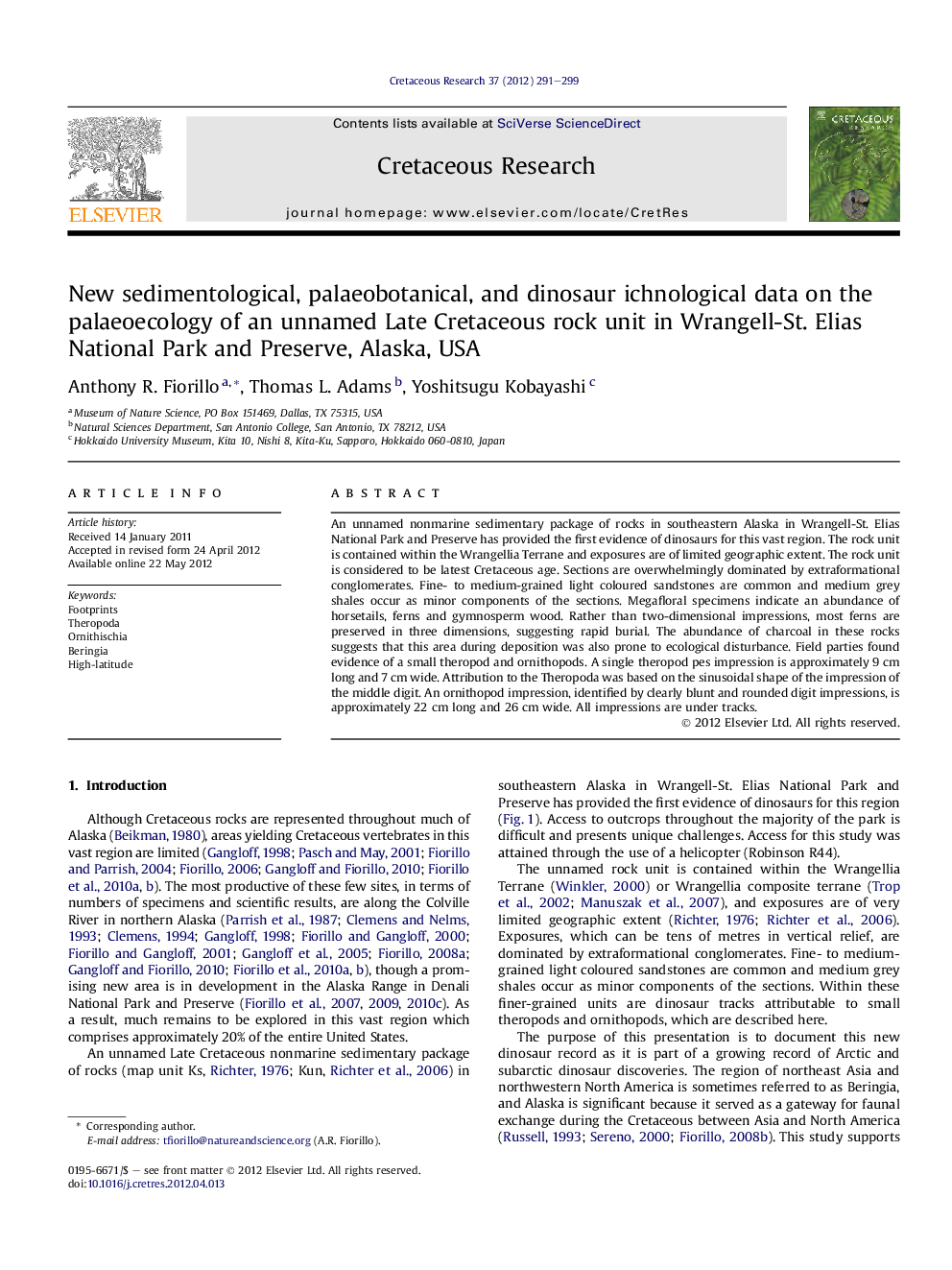| Article ID | Journal | Published Year | Pages | File Type |
|---|---|---|---|---|
| 6448394 | Cretaceous Research | 2012 | 9 Pages |
Abstract
An unnamed nonmarine sedimentary package of rocks in southeastern Alaska in Wrangell-St. Elias National Park and Preserve has provided the first evidence of dinosaurs for this vast region. The rock unit is contained within the Wrangellia Terrane and exposures are of limited geographic extent. The rock unit is considered to be latest Cretaceous age. Sections are overwhelmingly dominated by extraformational conglomerates. Fine- to medium-grained light coloured sandstones are common and medium grey shales occur as minor components of the sections. Megafloral specimens indicate an abundance of horsetails, ferns and gymnosperm wood. Rather than two-dimensional impressions, most ferns are preserved in three dimensions, suggesting rapid burial. The abundance of charcoal in these rocks suggests that this area during deposition was also prone to ecological disturbance. Field parties found evidence of a small theropod and ornithopods. A single theropod pes impression is approximately 9Â cm long and 7Â cm wide. Attribution to the Theropoda was based on the sinusoidal shape of the impression of the middle digit. An ornithopod impression, identified by clearly blunt and rounded digit impressions, is approximately 22Â cm long and 26Â cm wide. All impressions are under tracks.
Related Topics
Physical Sciences and Engineering
Earth and Planetary Sciences
Palaeontology
Authors
Anthony R. Fiorillo, Thomas L. Adams, Yoshitsugu Kobayashi,
